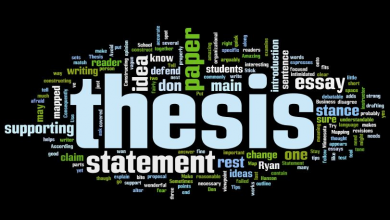An Overview of 2021 Best Databases for Enterprise DBMS
Enterprise database administration is a fast-changing arena. First, only relational databases ruled the space for so long, which had many drawbacks as the size and nature of databases evolved. Then came NoSQL or Not only SQL, which brought in some advantages in the times of Big Data, and the latest in the row is NewSQL, which claims to offer the benefits of both SQL and NoSQL databases. When it comes to choosing an appropriate DB for their enterprise DBMS, most of the decision-makers are confused as to which one to choose and how to go about it. Here, in this article, we will discuss the research results as to which are the most popular databases in 2020 and why. However, we are sticking to the SQL arena, and also, for your information, this is not a comprehensive list.
Is SQL still useful?
This is one simple question many out there tend to ask. Is it worth learning and using SQL? The short answer is ‘Yes.’ The StackOverflow Survey 2020 shows the latest IT trends as JavaScript and HTML is the top web development languages. And then came SQL as the third in the list. About 54% of the survey participants voted for it, which is not, however, a coincidence. Data storage and processing had always been a challenge in the IT sector for decades. Thousands of terabytes of data are getting generated day by day, and there is no scope of a question as to why should you learn SQL? Further, let us have an overview of the top popular DBs in 2020.
Top grossing DBs in 2020
Similar to last year’s study, the big three remains 1) MySQL, 2) PostgreSQL, 3) MS SQL Server. So, we can assume that nothing may change soon with these three. The first two, MySQL as well as PostgreSQL, comes for free and also run under the open source license. Also, there are huge user communities around these, which keep developing with plenty of plugins and improvements coming up. Next, we will take a closer look at the top databases in the order of ranking.
1. MYSQL
As we discussed in the above paragraph, MySQL had always remained on top of many such studies for quite some time now. The primary reason is that it comes for free and can work with almost all applications. IT can also run on all the platforms and operating systems like Windows, Linux, and macOS, etc.
The most amazing fact is that MySQL recently celebrated its 25th anniversary, which was started back in 1994 by the Swedish programmers David Axmark and Michael Widenius. Later in the year 2008, MySQL was acquired by Sun Microsystems, and in 2010, Sun was acquired by Oracle, so MySQL became part of Oracle. The fear people have now is that even though Oracle said that MySQL would remain open source, we may doubt that it may change over the course to a proprietary DB. For remote administration of proprietary DB, you can seek assistance from expert remote DBA services like RemoteDBA.com.
2. POSTGRESQL
PostgreSQL is an open-source and free to use DB, which can work in all possible situations and on all platforms. There is also a very dynamic user community around this DB. The users can develop projects on their own and build their extensions and plugins to use. Postgres is the DBMS used by the big technology giants like Skype, Instagram, Twitch, etc. With all these, PostgreSQL is an appropriate recommendation to make, and this DB also gains more and more users each year.
3. MS SQL Server
Microsoft SQL Server was established back in 1989 and is constantly growing ever since. Microsoft is a trusted name, and many companies, big and small, are now using their DB stack. Even though there is a dominance of the open-source solutions in the database market, MS SQL Server is surely doing great.
One thing to know about MS SQL Server is that even though its commercial version is used most commonly, there are also free versions. However, the free options have only limited possibilities and features. For example, in the express version, you can use only one process and 1 GB memory plus 10 GB of database files. For those who are beginning with SQL or just learning, this one is an idea, but not for business use.
In addition to SQL Server, Microsoft also comes up with a Cloud-based Azure platform. It means you can keep away from installing the MS Server on any physical computer and host it on the cloud instead. This facilitates the same database to work for many users simultaneously and keeps the data safer than being in one onsite installation.
4. SQLITE
SQLite is lately gaining in popularity largely. This is another free-to-use DB available under open source licensing. Even the source of SQLite is there in the public domain. SQLite is one of the best choices in mobile application development. The entire database content is stored in a single file of up to 140 terabytes. The library will implement an SQL engine, making it possible to use this database without running a separate RDBMS process. For mobile apps, it is a very practical solution.
SQLite is built on the SQL-92 standard, which means that you can learn and use it easily. Project SQLite has been there in development ever since 2000 and is getting ongoing support from a big community around it. In 2018, only about 19.7 percent of the professional developers surveyed said they were using this database. The share now increased to 30%, which signifies why it is a great solution for specific mobile applications.
5. MongoDB
MongoDB is a deviation from the DB mentioned above systems as it is not based on the relational DB model. It is an open-source DB, the only one among these top five, a non-relational DB. In this open-source model, the data is stored in JSON or BSON files. If you have already worked with the traditional relational databases, MongoDB may be strange to follow initially. But it is so easy to cope with, and it can also handle bigger data volume and the types of files that the traditional relational DBs cannot handle.
However, there are many more databases too apart from these top five. You may have to do a primary analysis of your requirements and the nature of data you have to handle to realize which database will be ideal for you to use.













